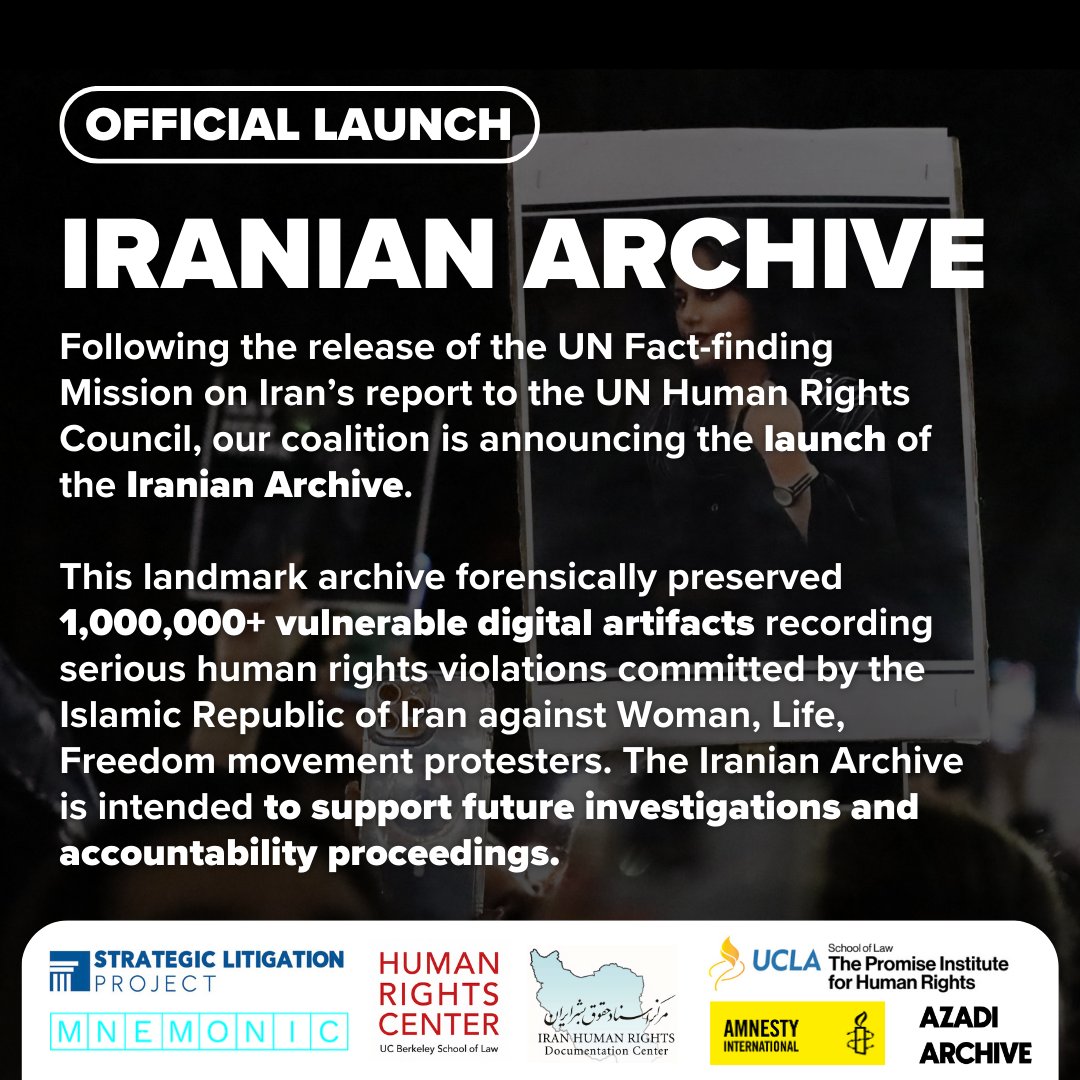For Woman, Life, Freedom
On September 16, 2022, Mahsa “Jina” Amini, a 22-year-old woman from Iran’s historically marginalized Kurdish ethnic minority, died in police custody in Tehran after being in a coma for three days. She had been detained for allegedly donning an “improper hijab” while on a family trip, and was found to have sustained severe beating at the hands of Iranian security forces. Amini’s killing sparked nationwide protests. Young women took to the streets — burning their headscarves, dancing, and calling for an end to the regime. Wide swaths of Iranian society joined the movement, including parents, grandparents, ethnic and religious minorities, LGBTQ+ persons, and people representing all genders and socioeconomic backgrounds, supporting the demands for “Woman, Life, Freedom” and calling for an end to the four-decade rule of Iran by the Islamic Republic.
In response, we joined a coalition of organizations to contribute to the creation of the Iranian Archive, led by Mnemonic, to preserve the open source content people in Iran risked so much to share online and ensure that preservation complies with legal standards in order to maximize the value of that content for court. We have shared our findings with the Independent International Fact-Finding Mission on the Islamic Republic of Iran, and initiated a series of reports based on the data collected to pursue accountability for specific crimes.
Partners






Explore the Iranian Archive
Due to security concerns, the Archive, the platform hosting preserved information, is only accessible by request. If you are working on accountability work related to the violent crackdowns against civilians during the nationwide protests beginning in 2022 in Iran, and want to access the Archive or specific information preserved, you can contact the international organizations listed above, or directly contact the project manager of the Iranian Archive at Mnemonic by kelly@mnemonic.org and c.c. to rapid-response@mnemonic.org.
News

March 21, 2024
More than 120 protesters blinded by Iranian agents, probe confirms
Student team leads Maddi Wong and Melinda Zou. Image by Brandon Sánchez Mejia. HRC in the News — Berkeley News: More than 120 protesters blinded by

June 16, 2024
HRC in the News — California Magazine / Leah Worthington, Working Towards Justice, profiling HRC’s Investigations Lab and featuring an ongoing investigation into the

April 26, 2024
Everything you need to know about Iranian rapper Toomaj Salehi and his death sentence
Iran Freedom Protest and Ukraine Protest, November 12, 2022, Ottawa Canada. Image by Taymaz Valley via Wikimedia Commons. Commentary — The Atlantic

April 10, 2024
Ongoing 6-month investigation confirms 120 women’s rights protestors blinded by Iranian agents
Student team leads Maddi Wong and Melinda Zou. Image by Brandon Sánchez Mejia. Investigations Lab in the News — The Daily Californian: Ongoing

March 23, 2024
Investigation Finds Dozens Of Iranian Protesters Lost Their Eyes
HRC in the News — Iran International: Investigation Finds Dozens Of Iranian Protesters Lost Their Eyes, profiling the Iran investigation supported by the Investigations Lab and HRC’s

March 18, 2024
Launching the Iranian Archive to Support Future Accountability Efforts
HRC in the News — Mnemonic: Launching the Iranian Archive to Support Future Accountability Efforts, announcing the Iran Archive – a joint effort by the Atlantic Council’s Strategic


